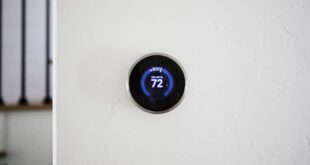By Elisa Wood
Advanced lighting has brought us not only energy savings, but also a slew of new screw-in-a-light bulb jokes. For LEDs, it usually goes something like this: How many people does it take to screw in a LED light? One. And a roomful of deep wallets to pay for it.
To be fair, the cost of LEDs (light-emitting diodes) has been falling dramatically and is now even competitive with conventional lighting in certain circumstances, according to the US Department of Energy.
Further, LED systems offer big energy bill reductions. Installations quickly pay for themselves, often in under two years for businesses.
“So if you have capital to spend, it becomes a very straight-forward approach to energy efficiency,” said Tom Pincince, president and CEO of Boston-based Digital Lumens, in a recent interview.
But many businesses have no capital to spare these days. What then?
That’s where the next chapter begins in the LED lighting story, according to Pincince. And it follows the dictate that has brought success to other green energy products, such as solar and energy efficiency building retrofits: Find a way to remove the customer’s upfront costs.
Digital Lumens plans to move in that direction early next year with what it calls ‘lighting as a service.’ Business customers basically outsource their lighting to Digital Lumens, with the focus of the deal on the cost of energy, rather than the cost of the equipment.
The customer enters into a shared-savings agreement with the company, where Digital Lumens installs, operates, maintains and updates equipment and continually optimizes software so that the system achieves greater energy savings. Digital Lumens and the customer then share the money saved.
The approach requires that the lighting contractor give close attention to the customer’s system. Lighting maintenance is likely to occur on a daily or weekly basis, software optimization quarterly and equipment replacement every three to five years, he said.
Fine tuning software is particularly important because of the ‘intelligence’ employed by today’s advanced lighting. We no longer have to remember to turn the lights out when we leave a room because the light remembers for us. Computer sensors in the lights track human behavior and respond, or they notice when sunlight brightens a room and they dim accordingly. In industry, this might translate into lights turning on as a worker drives a piece of heavy equipment into a facility and then shutting off as the worker leaves.
The solar energy industry burgeoned once it figured out consumer and business friendly financing packages. Pincince sees lighting moving in the same direction. Under the popular solar power purchase agreement, customers pay no upfront costs for solar panels, but only for the energy they use from the panels, while third parties install, own, maintain and finance the system. Lighting offers the opportunity for a similar approach but “with negawatts rather than megawatts,” he said.
It’s important for the LED industry to take this turn – to look at new ownership/service models – because some forecasters say that while LED costs will continue to drop, the decline may not be as dramatic as in the past. Falling microchip prices accounted for much of the price drop, and now chips contribute less to the total cost of the LED. So falling chip prices will have less impact on LED prices in the future, according to Digital Lumens.
LED is beyond a doubt a hot market. Groom Energy pegs 2012 annual market revenue at $630 million in North America and forecasts 40 percent annual growth through 2016. That puts the LED market at $1 billion next year.
So expect to see more and more players like Digital Lumens capturing market share by offering new ways to make LEDs affordable. With luck, the screw-in-a-LED light bulb jokes will get better too.
Elisa Wood is a long-time energy writer whose free newsletter is available at RealEnergyWriters.com.
 Alternative Energy HQ solar power for homes, wind energy, and bio fuel issues
Alternative Energy HQ solar power for homes, wind energy, and bio fuel issues







